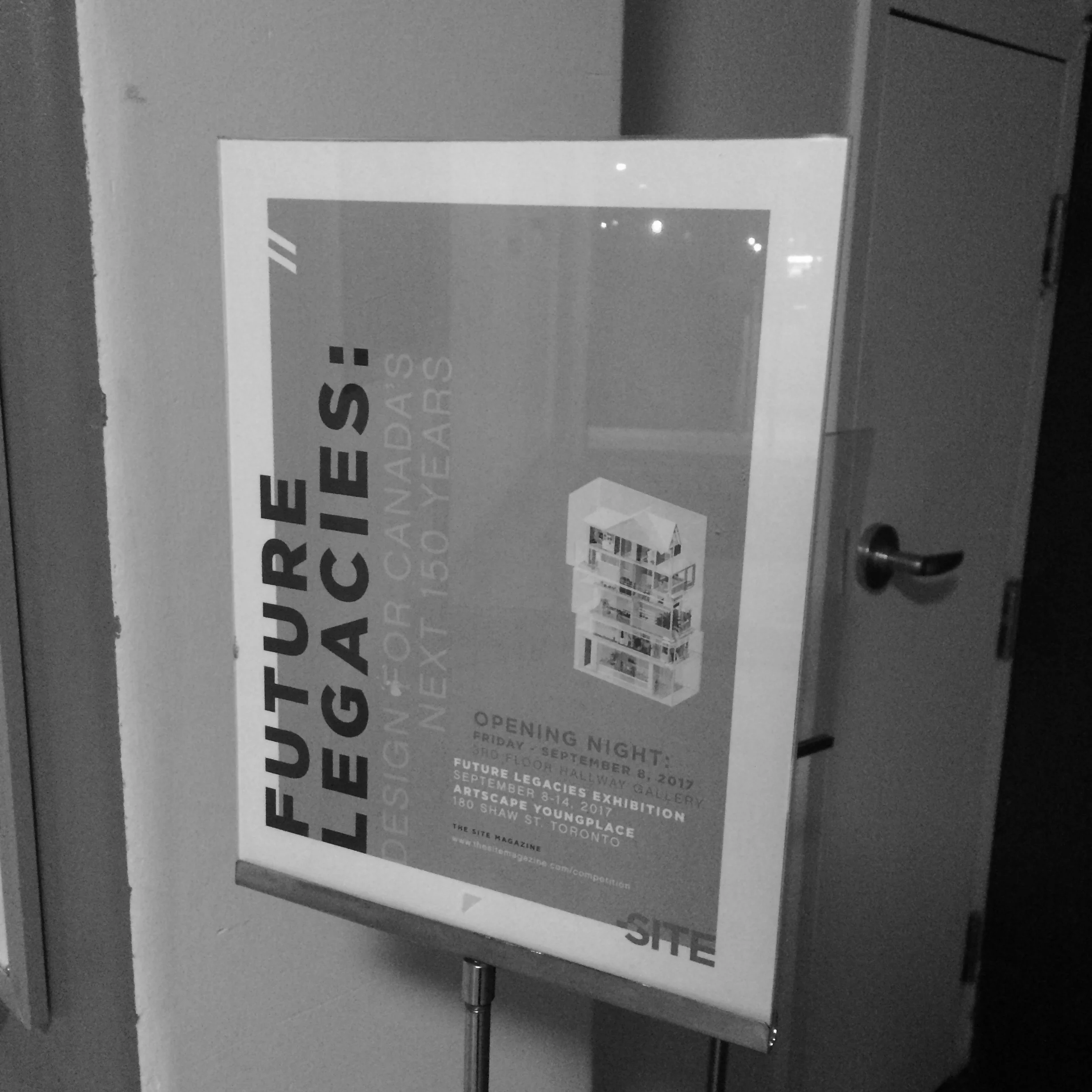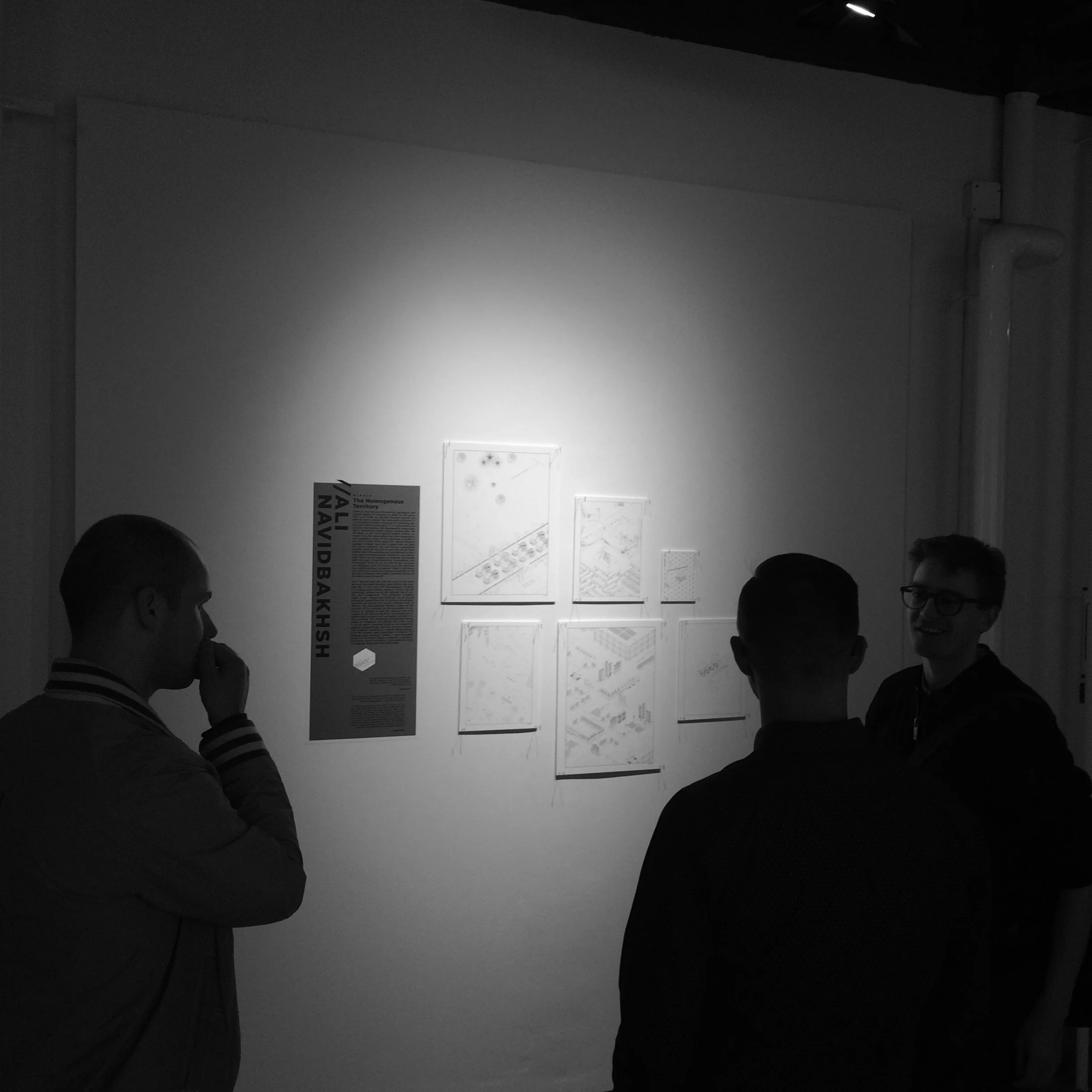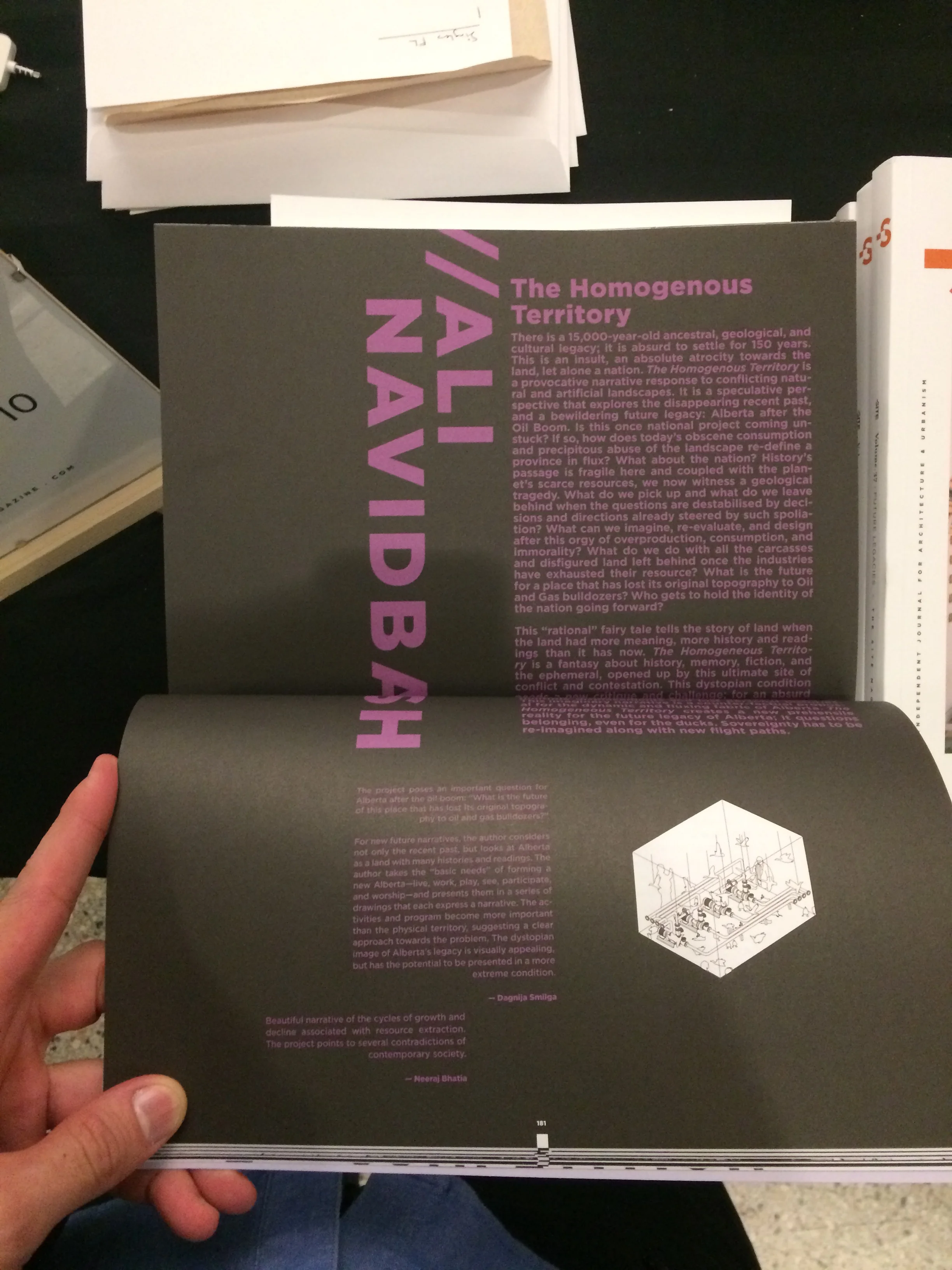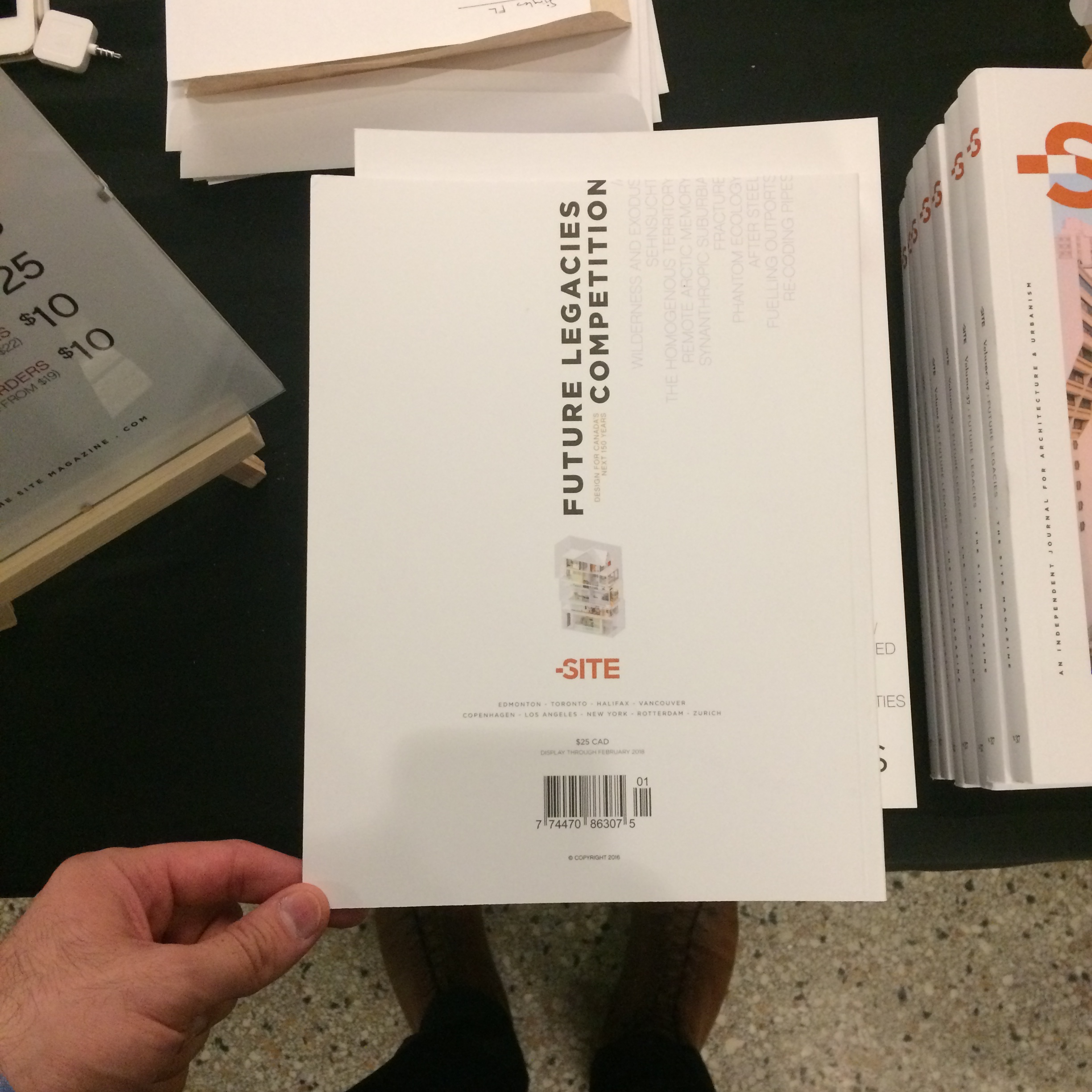The Homogeneous Territory
There is a 15,000-year-old ancestral, geological, and cultural legacy; it is absurd to settle for 150 years. This is an insult, an absolute atrocity towards the land, let alone a nation. Homogenous Territory is a provocative narrative response to conflicting natural and artificial landscapes. It is a speculative perspective that explores the disappearing recent past, and a bewildering future legacy: Alberta after the Oil Boom. Is this once national project coming unstuck? If so, how does today’s obscene consumption and precipitous abuse of the landscape re-define a province in flux? What about the nation? History’s passage is fragile here and coupled with the planet’s scarce resources, we now witness a geological tragedy. What do we pick up and what do we leave behind when the questions are destabilised by decisions and directions already steered by such spoliation? What can we imagine, re-evaluate, and design after this orgy of overproduction, consumption, and immorality? What do we do with all the carcasses and disfigured land left behind once the industries have exhausted their resource? What is the future for a place that has lost its original topography to Oil and Gas bulldozers? Who gets to hold the identity of the nation going forward?
This “rational” fairy tale tells the story of land when the land had more meaning, more history and readings than it has now. The Homogeneous Territory is a fantasy about history, memory, fiction, and the ephemeral, opened up by this ultimate site of conflict and contestation. This dystopian condition needs a new critique and challenge; for an absurd ecological assault that will re-purpose the exhausted lands and glorify the current irrational state of Alberta. The Homogeneous Territory draws out the contours of the possible and the impossible. It represents an attempt to heal the colossal land scars caused by Oil Sand production, by bewildering infrastructural solutions and ecological fantasies of a very real kind. This theoretical architectural fantasy dwells on fragments and clichés; the drawn world is not so much a drowned world as one marked by multiple displacements and lost personal histories. This imaginary narrative is a counter-factual proposal for the dynamic and fluxing fabric of Alberta. The Homogeneous Territory creates a new prehensile reality for the future legacy of Alberta; it questions belonging, even for the ducks. Sovereignty has to be re-imagined along with new flight paths.
A POST-FUTURE NARRATIVE
Saturday, July 2nd, 2017—there is no better moment to mark the end of Alberta’s Dirty Oil extraction, precisely
when Persia emerged from years of economic isolation, and the United States of America lifted crippling
sanctions in return for the country to comply with a deal to control its oil market. There has never been a
territorial reform at this scale since the Federal Cash Relief fund (2008). The Homogeneous Territory of Alberta
intends to re-think a future memory and re-build new contours on the terra-formed boreal forest of Northern
Alberta; the first territory built as an active force after economic austerity.
As post-capital movements rise in the West following Brexit and the triumph of Donald Trump—and as
Alberta’s landscape becomes ever more loathsome—a shift to homogenization seems inevitable. National
feeling struggles here. The lucrative political campaign processes of remediation in exhibit by the Department
of Factual Certainty as a symphony of facades that has re-modelled and transformed the landscape into a
performance of truth, reality, and personality contests. As the citizens and visitors experience the disconnected
autonomous moment of time by celebrating the 150 anniversary of The Great White North, a new territory is
rising; the economy of survival is here and the parties’ banners and flags move in unison to broadcast their
presence in the region and reach out to their constituency for support. Post-capital has finally provided a
solution, a new economic reform for The Homogeneous Territory.
Built out of expandable space frame structures that keep the region intact from any sudden economical shift,
the scale and pace of the Homogeneous Territory and the refreshed economical guidelines challenge the
notion of permanence as a basic state of any province. These ephemeral landscapes of pop-up industries
persistently increase and provoke the notion of “The City” as a permanent but bewildering entity. Malleable,
memory never quite succeeds to structure such urban ideology.
The growing attention paid to the economic crisis and ecological issues has re-appeared within Alberta’s
new landscape by harnessing the anxiety and occupying the recent emergence of corporate efficiency as a
supermodel for land reformation. Homogeneous Territory thrashes out a malleable organization platform set
within a range of active forces and elements that simultaneously support its continuity. This paradox is not
beyond us. The structure of the new territory is around one sovereign purpose. It functions as a central force
that not only defines its philosophy and complexity but also determines essential characteristics, such as the life
cycle of each corporation and its entire labour force, its material composition, and the place it occupies in the
cultural context of Alberta in which it grows and operates.
As an extreme case of an ephemeral economy, the Homogeneous Territory of Alberta demystifies a distilled narrative surrounding the development of one province in time. Even the future has a legacy we can never catch up with. Homogeneous Territory acknowledges the urgency to re-examine accepted permanent solutions as the only mode for the formulation of corporate efficiency. Into this, we slip a new delineation of space and time, drawn to stunning and accurate imperfections. This posits new protocols that are perpetually reformulating, re-adapting, and re-projecting in an iterative search for a temporary economy of survival that reacts to a permanent state of crisis. Thus, the Homogeneous Territory offers a new set of social and economic principles with tentative expiry dates and a return to pre-planned obsolescence.
As a parallel manifesto to the Homogeneous Territory, The Yellow Shrines have enabled Alberta to experience a never-before-seen architecture of wonderful monumental pyramids. The Yellow Shrines keep the spirit of the gods and goddesses alive through the collection of offerings and holy sacrifices; worshippers offer jars of clean dirt as indulgences hoping one day to remediate the lost land with their sacrifices. Thanks to the Foreign Workers Program, this platform provides prosperity and sets a precedent for a new religious ground. Yellow Shrines are the key element in providing good fortune and spiritual support for all.
Homogeneous Territory is the solution to the sad oil in Alberta where voluntary isolation and estranged national feelings transform an idyllic toxic land into an extraordinary theatre of ephemeral anxiety. This new ground becomes an unfertile terrain, a landscape of extreme experimentation, adulation, and, dare we utter it, a new ecology of hope and life in a heavily polluted gluten-free carcinogenic land; here, only time offers stability, a celebratory escape and crushing re-inventions distancing us from the anxiety of uncertainty. A vision that intervenes in its own aching causality crushed by the machines that can super-size our minds. A vision that intervenes in Canada itself? LWPSP&W—this new ecology of hope provides a chance to Live, Work, Play, See, Participate, and Worship.
http://www.thesitemagazine.com/competition/
Beautiful narrative of the cycles of growth and decline associated with resource extraction. The project points to several contradictions of contemporary society. – Neeraj Bhatia
The project poses an important question for Alberta after the oil boom: “What is the future of this place that has lost its original topography to oil and gas bulldozers?”
For new future narratives, the author considers not only the recent past, but looks at Alberta as a land with many histories and readings. The author takes the “basic needs” of forming a new Alberta—live, work, play, see, participate, and worship—and presents them in a series of drawings that each express a narrative. The activities and program become more important than the physical territory, suggesting a clear approach towards the problem. The dystopian image of Alberta’s legacy is visually appealing, but has the potential to be presented in a more extreme condition. - Dagnija Smilga
This exhibition was supported by funding from the Canada Council for the Arts and regular partners, including ArtsEverywhere. Special thanks to Critical Distance for their support in facilitating this exhibition.








